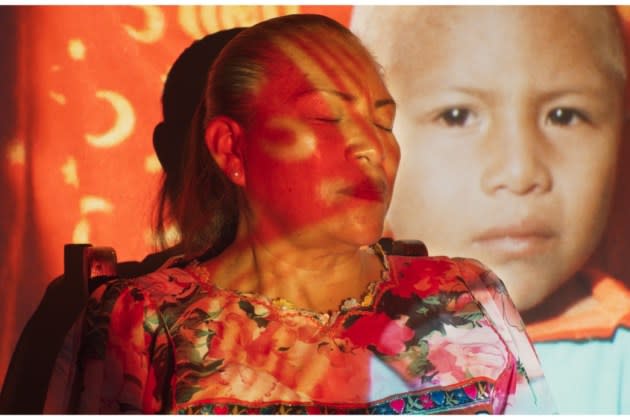‘God Is a Woman’ Review: A Moving, Time-Bridging Reflection on Documentary-Making and Who It’s Really For

Who does a documentary truly belong to — the people who make it, the people who fund it, or the people it depicts? On the face of it, the answer seems obvious: At a spiritual level, if not always a corporate one, we tend to think of art as the property of the artist. Yet in dusting off a long-languishing nonfiction feature from the 1970s that was taken from its stymied director by his bankrollers and sent to the vault, Andrés Peyrot’s thoughtful, mirror-holding doc “God is a Woman” makes a compelling case for the third option. With the old project terminally abandoned and its helmer no longer alive, it’s the Indigenous Panamanian community filmed in the first place who believe themselves the heirs to footage they’ve patiently waited half a century to see. In empathetic, increasingly poetic ways, Peyrot’s film finally presents it to them.
A notable curtain-raiser for this year’s Venice Critics’ Week selection, “God is a Woman” shares a title with the near-lost film at its root: a portrait of Panama’s Kuna people on the San Blas Islands, by the late Frenchman Pierre-Dominique Gaisseau. Gaisseau’s career peaked with 1961’s “Sky Above and Mud Beneath,” a travelogue surveying the tribes of what was then Dutch New Guinea that played in Competition at Cannes and won the documentary feature Oscar; in the early 1970s, “God is a Woman” was conceived along similar lines. With his wife Kyoko and young daughter Akiko, Gaisseau spent a year living within in the Kuna community while filming them. When the project eventually ran out of money, the bank took possession of the footage.
More from Variety
Michael Mann's 'Ferrari': Italy Key Getting Big Hollywood Movie to the Big Screen
Without Zendaya, Venice Opening Night Movie Lands Soft 90-Second Standing Ovation
Gaisseau moved on, even if he’d never make another feature; for the Kuna, however, the mystery of what happened to “their” unseen film became part of local lore, passed down to subsequent generations. The footage confiscated by the bank was donated in 2010 to the Panamanian Ministry of Culture, and subsequently mislaid; by chance, further reels were found by Gaisseau’s widow in a family friend’s home. Peyrot doesn’t allow this romantic, myth-building backstory to over-elevate Gaisseau’s work: As couched in the new film, the vintage footage is revealing and often beautiful, though the limitations of its ethnographic focus and exoticizing, arm’s-length Western perspective are laid bare. Even the inherited title alludes to Gaisseau’s over-simplified interpretation of the Kunas’ belief system: A matrilocal society where women own the land and lead the administration, their spiritual ideologies aren’t so neatly gendered.
Peyrot’s own material counters that distanced observational approach with a more receptive one, his camera not merely scrutinizing its subjects but generously in dialogue with them. Even before seeing Gaisseau’s film, the Kuna elders that Peyrot interviews — notably prominent local intellectual Arysteides Turpana, who assisted Gaisseau during his shoot, and passed away in 2020 — recall the Frenchman’s mission with some skepticism, and not a little amusement at the new docmaker in their midst. “Fuck if I care about tourism — children need to know what their culture is,” says one. For all their reservations about the Gaisseau gaze, they concede that his film, once seen, would be of significant historical value to their community.
With some humility, “God is a Woman” merges its outside point of view with that of a younger generation of Kuna filmmakers determined to tell their own stories. (“You can be a filmmaker and a farmer,” they agree, rejecting the superior social status of those who wield the camera.) Two of them, brothers Orgun and Duiren, become key collaborators, contributing a vital musical sequence in a which local rapper Sidsagi Inatoy advocates for Indigenous culture and debunks certain entrenched, Westernized history lessons about their past.
Such brazen, angry new art sits alongside respectful recordings of more traditional Kuna music and ritual: the initiation ceremonies that are reserved only for girls in the community — though one woman tartly notes the internal class politics of which families can afford the rite — and an annual reenactment of the Kunas’ 1925 revolution against their Panamanian overlords. The latter, a vivid display of flamboyantly staged violence, Peyrot presents without context or hand-holding historical footnotes, pointedly prioritizing the Kuna audience and its attendant knowledge, and trusting in outsiders to make the connection.
It’s a gesture of deference that fully blooms in the film’s deeply affecting finale, as Gaisseau’s film is at last publicly screened to a crowd of rapt locals, many in tears at the sight of people and places long confined to memory. In an elegantly surreal formal flourish, Gaisseau’s images are projected onto the very faces he once filmed, the past and present alive and alloyed in the same image — and the film, whatever the future custody of its physical reels, finally theirs for the keeping.
Best of Variety
Sign up for Variety’s Newsletter. For the latest news, follow us on Facebook, Twitter, and Instagram.

 Yahoo News
Yahoo News 